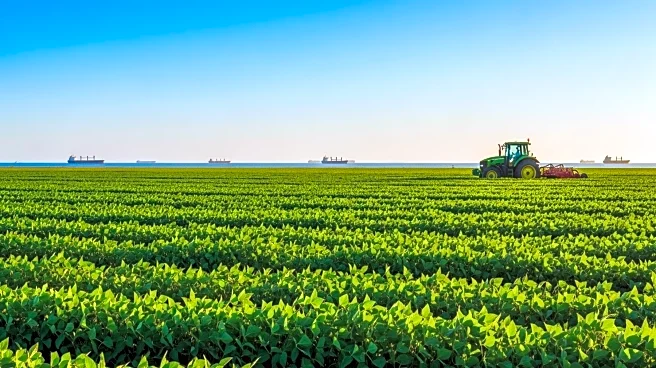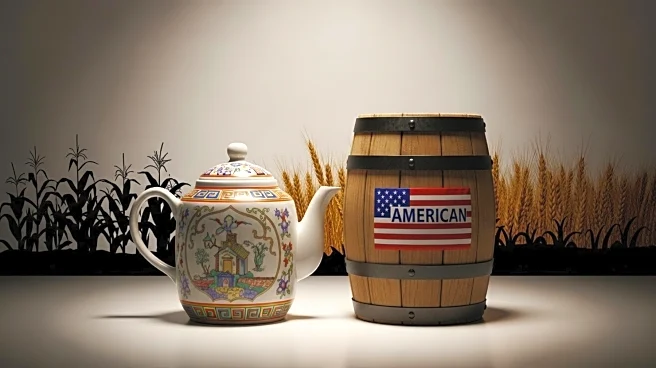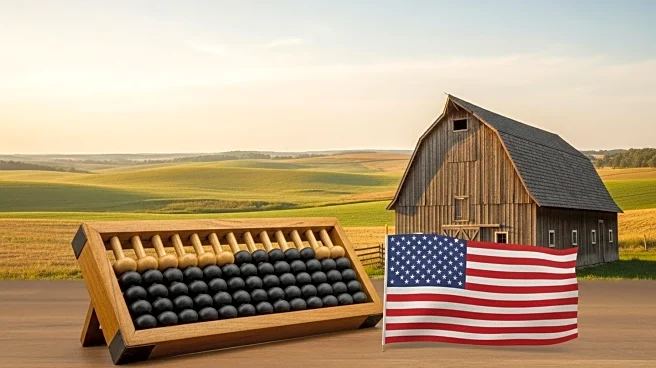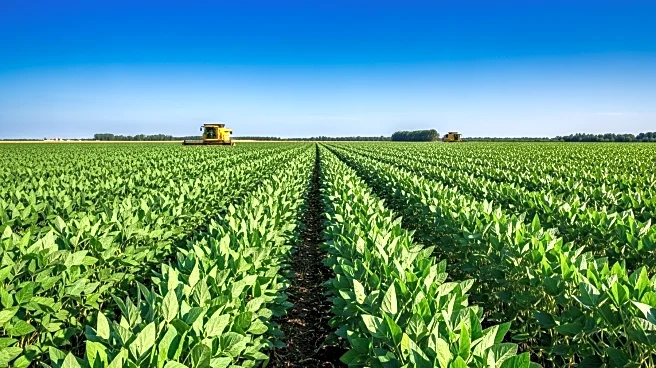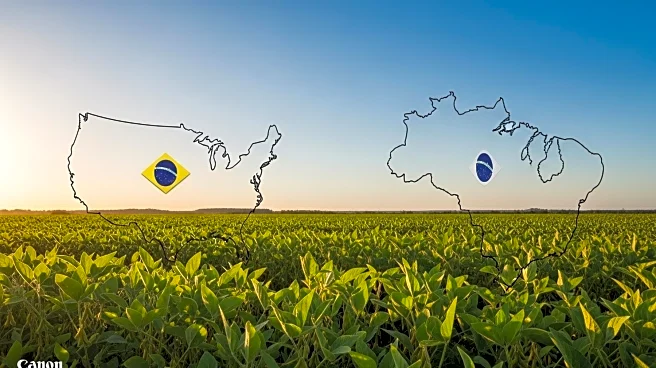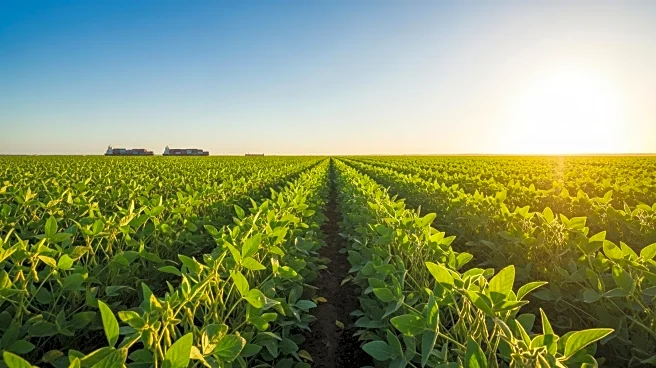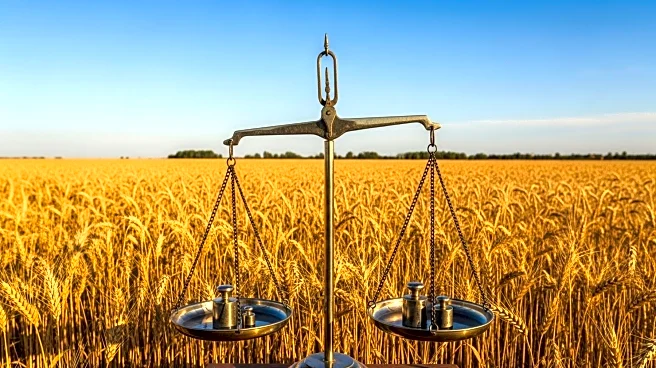What is the story about?
What's Happening?
The U.S. soybean harvest has started without any orders from China, the world's largest buyer. American producers are harvesting a crop estimated at 4.3 billion bushels, with no indication of when shipments to China will resume. Meanwhile, Brazil has set a record for soybean shipments to China from January through August 2025. The trade relationship between the U.S. and China remains strained, with tariffs impacting U.S. exports. The situation raises concerns about market access and potential financial stress for U.S. farmers.
Why It's Important?
The lack of Chinese orders for U.S. soybeans is significant as it impacts the market dynamics and financial stability of American producers. China is a major buyer of U.S. soybeans, and the ongoing trade tensions highlight the importance of resolving trade disputes to ensure market access and economic stability. The shift in trade patterns, with Brazil capturing a larger share of the Chinese market, underscores the need for strategic diplomacy and negotiation to address trade barriers and enhance competitiveness.
What's Next?
As the U.S. soybean harvest progresses, producers may face challenges related to storage capacity and market access. The situation may prompt further negotiations between the U.S. and China to resolve trade disputes and restore market access. Additionally, U.S. farmers may explore alternative markets and strategies to mitigate the impact of trade tensions, potentially leading to increased diversification and innovation in agricultural practices.
Beyond the Headlines
The focus on soybean trade highlights broader trends in global agriculture, where market access and trade relations play a crucial role in shaping industry dynamics. The emphasis on resolving trade disputes underscores the importance of strategic diplomacy and collaboration in achieving economic stability and growth. This development may drive increased interest in alternative markets and diversification strategies, fostering innovation and resilience in the agricultural sector.
AI Generated Content
Do you find this article useful?
